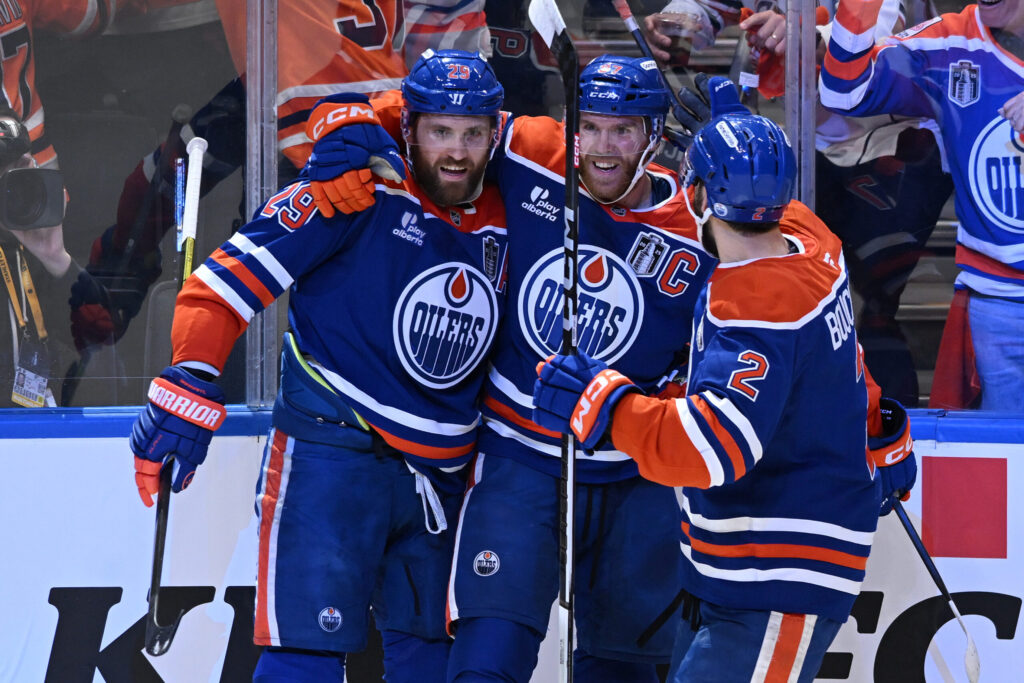The dust has barely settled on a heartbreaking Stanley Cup Final, and already the air in Edmonton is thick with a different kind of tension. The sting of defeat is slowly giving way to the cold, hard reality of the NHL’s business cycle. For the Oilers, that business revolves around one man: Connor McDavid. The best player on the planet is heading into the final year of his contract, and the negotiation that looms isn’t just about securing a generational talent; it’s a decision that will fundamentally define the franchise’s championship window for the foreseeable future. The central question isn’t whether McDavid will get paid—it’s how much, for how long, and whether that number can coexist with the ultimate goal of hoisting the Stanley Cup.
The Short-Term Gambit
For years, the conventional wisdom surrounding a player of McDavid’s stature was to lock him down for the maximum eight years. It provides stability for the team and security for the player. Yet, the chatter among the NHL’s most trusted insiders suggests a paradigm shift. John Shannon, a veteran voice in the hockey world, posits that McDavid’s new deal could be a surprisingly short-term, high-value agreement—perhaps three or four years. Some have even whispered the possibility of a two-year bridge to an even bigger payday down the road.

Why the sudden shift away from long-term security? The answer lies in the NHL’s rapidly escalating salary cap. After years of relative stagnation due to pandemic-related revenue losses, the cap is set for a monumental leap. The projection for the 2027-28 season is a staggering $113.5 million, a significant jump from the current $95.5 million.
Also on the EDGE – McDavid and the Oilers: “Encouraging” Signs, but Don’t Pop the Champagne Just Yet
Signing a shorter deal—say, the four-year term that a source like David Staples personally leans towards—allows McDavid to re-enter the market just as the financial landscape of the league transforms. He can cash in on a contract that reflects a much higher percentage of an even bigger pie. From the Oilers’ perspective, a shorter term, while carrying the inherent risk of McDavid walking in his early 30s, offers more immediate flexibility. It avoids handcuffing the franchise to a colossal cap hit for nearly a decade, a lesson many GMs have learned the hard way. The consensus among insiders like Bob Stauffer, Elliotte Friedman, and Frank Seravalli seems to be converging on this three-to-five-year window. The era of the lifetime mega-deal, it seems, may be giving way to a more strategic, flexible approach, even for the game’s elite.
The Price of Greatness vs. The Price of Victory
So, what’s the magic number? In an unrestricted, open market, McDavid could command a figure north of $50 million per season. He is, without exaggeration, the most dominant offensive force the league has seen since Mario Lemieux. But the NHL doesn’t operate in a free market. Its hard salary cap system forces a delicate, often painful, negotiation between a player’s individual worth and a team’s collective need. The maximum McDavid can sign for under the current CBA is $19.1 million per year.
While that figure represents the ceiling, the actual landing spot is likely to be significantly lower. Seravalli has previously floated a number in the $16 million range. Shannon believes McDavid will “come in lower than a lot of people are expecting,” a nod to the captain’s intense desire to win.
Let’s break down the potential scenarios:
- The “Team-Friendly” Deal: $14 Million AAV: This figure would be a masterstroke of cap management. It would provide McDavid with a raise from his current $12.5 million but leave Ken Holland (or his successor) with crucial breathing room. A one-year pact at this number would be particularly savvy, positioning McDavid to sign a true monster deal when the cap explodes in 2027-28. It’s a low-end estimate, but one that prioritizes immediate Cup contention above all else.
- The Realistic Compromise: $16 Million AAV: This seems to be the sweet spot where most speculation lands. It represents a significant pay bump, acknowledging his status as the league’s best player, without completely crippling the team’s cap structure. A four-year deal at this number, as Staples has hypothesized, would see the Oilers emerge from their tightest cap squeeze right as they enter the 2028 Playoffs, aligning with the projected cap increase.
- The Maximum Squeeze: $18 Million AAV: This is the high-end, “get what you’re worth” number. While nobody would begrudge McDavid for taking it, an $18 million cap hit would place an almost unbearable strain on the Oilers’ finances and their ability to build a deep, versatile roster around their core.
The dilemma is as old as the cap itself. Taking too large a slice of the pie, no matter how deserved, shrinks the slices available for everyone else. And in a league where depth wins championships, that’s a dangerous game to play.
Also on the EDGE – Feeling Like Make-or-Break: Oilers Facing Big Questions in 2025-26
The 42 Percent Problem: A Stanley Cup Conundrum
To understand the gravity of McDavid’s next contract, we need to look at the anatomy of a Stanley Cup champion in the salary cap era. Since 2006, a clear pattern has emerged. The top four highest-paid players on a championship team have, on average, consumed 40.5% of the team’s total salary cap. This isn’t just a quirky statistic; it’s a proven blueprint for success. Keeping that “Top Four” number under 42% is considered a best practice for building a roster that can withstand the grind of a two-month playoff run.
Teams that deviate from this formula rarely succeed. In the last 20 years, only three champions have won while dedicating more than 45% of their cap to their top four players: the 2007 Ducks (47.1%), the 2008 Red Wings (47.3%), and the 2016 Penguins (45.2%). It’s the exception that proves the rule.
During the eight years of McDavid’s current $12.5 million deal, the Oilers have navigated this landscape skillfully. Their Top Four have averaged 42.1% of the cap—right in the sweet spot for a contender. But a perfect storm is brewing. For the upcoming 2025-26 season, even before McDavid’s new deal kicks in, the landscape changes dramatically. With massive, well-deserved raises for Leon Draisaitl and Evan Bouchard taking effect, Edmonton’s Top Four are projected to consume a staggering 48.4% of the cap. That’s higher than any team that has ever won the Stanley Cup.

This is the tightrope the Oilers are walking. They are already in historically dangerous territory before giving the best player in the world his raise.
Charting the Course: How McDavid’s Choice Shapes the Future
The impact of McDavid’s decision cannot be overstated. Let’s project how each salary scenario affects that critical Top Four cap percentage for the 2026-27 season (assuming a $95.5 million cap):
- If McDavid signs for $14 million: The Top Four hit would be 46%. Still high, but it starts to creep back towards the realm of possibility. More importantly, when the cap jumps to a projected $113.5 million in 2027-28, that percentage plummets to a manageable 42.1%. This deal offers a clear, albeit challenging, path back to cap sanity.
- If McDavid signs for $16 million: The Top Four hit rises to 47.9%. This puts the Oilers firmly in the territory of the 2007 Ducks and 2008 Red Wings—teams that won despite a top-heavy structure, a feat incredibly difficult to replicate.
- If McDavid signs for $18 million: The number balloons to an astronomical 49.9%. Nearly half the team’s entire cap would be dedicated to just four players. Building a deep, 20-man roster capable of winning a championship around that core would be a Herculean task, requiring a near-perfect run of drafting, development, and bargain-bin free-agent signings.
To overcome these odds, Edmonton will need everything to go right. They’ll need breakout seasons from young, inexpensive forwards like Matt Savoie and Ike Howard. They’ll need Vezina-caliber goaltending on a budget. And they’ll need a bit of luck, particularly with injuries. The controversial but effective strategy of placing high-value players on long-term injured reserve (LTIR) before the trade deadline to free up cap space—a tactic mastered by past champions—is being outlawed after the 2026 Playoffs, removing a key pressure-release valve for cap-strapped teams.
Also on the EDGE – How a New Wave of Talent Will Define the Oilers’ Future
For McDavid, the financial calculus is complex. Taking less money is a gamble. The payoff isn’t guaranteed. But a Stanley Cup victory in Edmonton would unlock a level of marketing and sponsorship potential that could far exceed the money left on the table. It’s a bet on himself and his team, a wager that glory is ultimately more valuable than pure currency. This contract negotiation is more than just a business transaction; it’s a defining moment that will shape a legacy and determine whether the Oilers’ golden era culminates in a parade or simply fades into a cautionary tale of what might have been.
Created with the aid of Gemini AI
